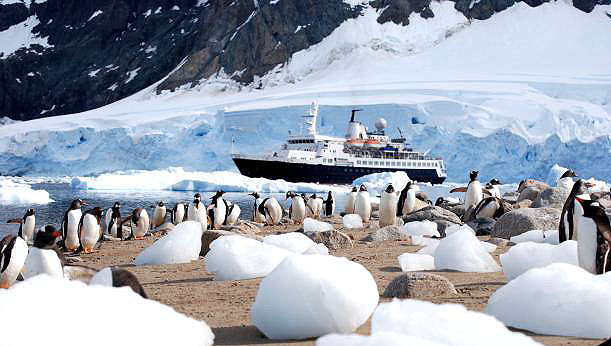New guidelines from international shipping bodies to improve safety in polar waters
12 November 2019

New maritime guidelines have been issued by international shipping and oil companies on how to handle navigating icy regions under the Polar Code which came into force in January 2017.
The new joint guidelines, known as the Polar Water Operation Manual (PWOM) are from the International Chamber of Shipping (ICS) and the Oil Companies International Marine Forum (OCIMF). The manual aims to support shipping companies by providing advice on how masters and shipping companies can develop a PWOM that best suits the needs of their individual ships - taking into account the environmental hazards and the nature of their operations.
The additional International Convention on Standards of Training, Certification and Watchkeeping for Seafarers (STCW) training requirements under the Polar Code are the internationally agreed minimum standard to allow seafarers to work in polar regions.
Nautilus professional and technical officer, David Appleton commented: 'Companies that are experienced in operating in these areas have well established systems to ensure that their seafarers are appropriately qualified above and beyond the minimum requirements, and any guidance that can assist other companies to reach the same standard is welcome.'
In the UK, the Merchant Navy Training Board has also developed Polar Code training course criteria which ensures that UK seafarers are able to gain the required certificates to continue working in these areas.
The guidelines for the PWOM manual were prepared by expert contributors with in-depth experience of operating ships in polar waters, as well as knowledge of the challenges faced by seafarers on board, say the ICS and OCIMF.
Maritime trade between Arctic destinations and the rest of the world is expected to expand and an increasing number of ships are now undertaking voyages in polar waters. Technical developments in ship design and equipment continue to facilitate more and more ship operations in remote polar areas, despite challenging and unpredictable sea and weather conditions.
The International Code for Ships Operating in Polar Waters (Polar Code), adopted by the United Nations International Maritime Organization (IMO), requires shipping companies intending to operate in polar waters to develop a PWOM in order for their ships to be issued with a Polar Ship Certificate.
Appendix II of the IMO Polar Code already provides a model PWOM, but ICS and OCIMF have recognised that additional guidance is necessary to help shipping companies to develop a quality PWOM that is truly fit for purpose.
In extreme conditions, and especially in ice, the way in which a ship is operated is critical for safety and environmental protection.
Topics addressed in the new guidelines include: identifying hazards; understanding operational limitations; updating procedures; upgrading equipment and systems; understanding relevant legislation and ensuring that the results of assessments are fully addressed in the PWOM.
Available free of charge, the ICS/OCIMF Guidelines can be downloaded from the ICS and OCIMF websites and the Arctic Shipping Best Practice Information Forum (ASBPIF) web portal.
Tags
